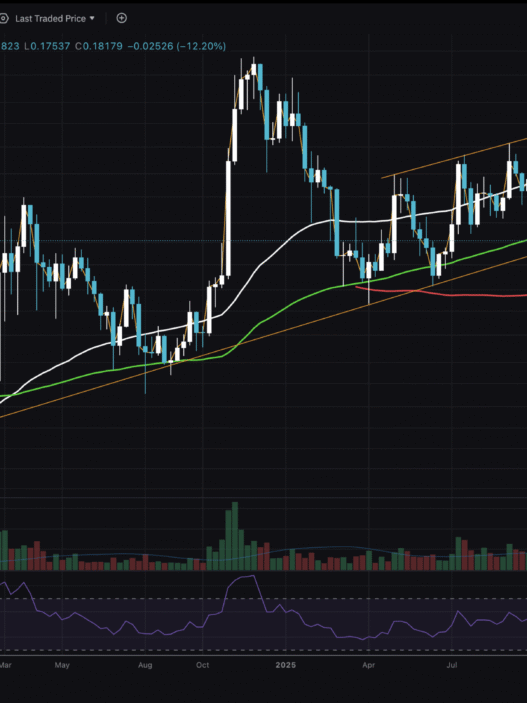Key Takeaways
How could China’s rising M2 money supply impact Bitcoin?
Historically, increased Chinese liquidity has correlated with BTC price gains, potentially boosting global demand.
What is Bitcoin’s short-term price target based on current market data?
Market projections suggest a short-term target of $117,000, driven by liquidation clusters around that level.
Bitcoin [BTC] may soon experience a major influx of liquidity after one of its deepest shakeouts in recent months.
This time, all eyes are on Chinese investors as global liquidity trends could favor the asset, helping it reclaim its lost bullish momentum.
Chinese liquidity to Bitcoin’s rescue?
A recent report from Alphractal highlights a notable surge in China’s M2 money supply.
M2 money supply measures the total amount of money circulating in an economy that can be quickly converted into cash or used for spending. It is a key indicator of economic growth. According to the report, China’s M2 stood at $24.9 trillion, at press time, surpassing that of the U.S.
Historically, there has been a strong correlation between rising Chinese M2 and BTC’s market performance. An increase in M2 liquidity has often been followed by a corresponding rise in Bitcoin’s price.
Source: Alphractal
This happens because excess liquidity tends to flow into other asset classes, Bitcoin being one of the main beneficiaries under historical conditions.
Analyst João Wedson supports this outlook, noting that Bitcoin mining activity remains heavily concentrated in China. He said,
“There are still many Chinese miners and OG whales active in the market. As long as China’s M2 keeps increasing, global liquidity will likely continue to favor Bitcoin.”
An opposing view
Ray Youssef, CEO of NoOnes, presents a contrasting view on China’s liquidity and its impact on BTC. In an email, he explained,
“Most of the new liquidity is likely to be absorbed domestically within the nation’s economic system. China’s M2 expansion reveals what’s really happening under the hood of the global economy,”
Youssef believes China’s liquidity boost is an attempt to stabilize its internal economy, possibly by increasing money supply, rather than to stimulate external investments such as BTC.
Data from Sosovalue supports this argument, showing that Chinese demand for Bitcoin remains relatively low.
Hong Kong’s Bitcoin exchange-traded funds (ETFs) continue to underperform, with total holdings valued at just $461 million, a sharp contrast to the $61.91 billion held by U.S. Bitcoin ETFs.

Source: Sosovalue
In fact, U.S. government-held Bitcoin alone is worth $34 billion, despite America’s money supply being about 2.1 times smaller than China’s.
Still, Ray Youssef acknowledges Bitcoin’s link to global liquidity:
“Monetary easing cycles, wherever they occur, reinforce the long-term case for non-sovereign assets. Bitcoin continues to evolve as a central part of that conversation,” he added.
Bitcoin cycle and short-term target
The potential for a continued rally now depends on whether Bitcoin maintains its repetition of a fractal cycle, a four-year pattern that has historically tracked the asset’s movements.
If Bitcoin follows this pattern, it could defy expectations tied to Chinese liquidity and rally further. However, if it breaks the pattern, a new high above the current level of $108,000 could emerge.
Short-term projections still point toward a $117,000 target, as suggested by the liquidation heatmap, which shows a cluster of short-seller positions around that price range.

Source: CoinGlass









